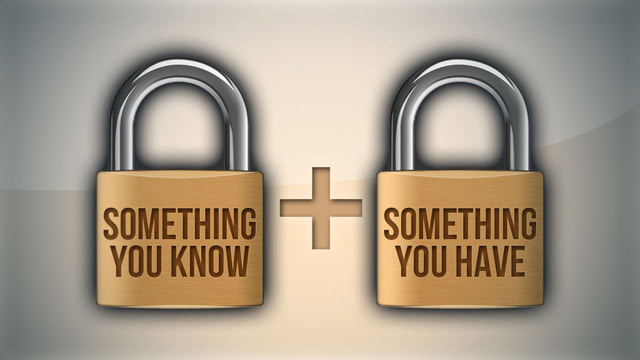Two Factor authentication technology is, despite its current association with electronic technology, actually a very old process of verifying someone’s identity by requiring them to submit more than one “factor” that shows they have authorization to access some kind of information. The basic process, in other words, predates even the modern era.
The digital version of this technology is in essence a slightly more complex version of the same basic principle. In order to access locked information such as your email, cloud storage or computer device, you submit a password and accompany it with a second factor such as a login token, biometric reading of your fingers or eyes, or another access key that comes from a different source such as a onetime code sent to your mobile phone.
Today, two factor authentication systems following the basic above criteria are used in all sorts of settings ranging from online storage mediums, to personal devices to corporate data protection systems.
In all cases, the authentication systems can range from basic consumer market verification protocols to more complex corporate systems. And, in all cases, there are a number of tricks and tips that need to be followed if you want to make the most of two factor authentication technology.
Take Advantage of Two Factor Wherever Possible
Maybe not everywhere, but as frequently as you can find it; this means taking advantage of two factor authentication capacity wherever you find it in any of your devices or data applications.
If you’re using cloud storage systems, choose those that actually offer the added security of two login factors, especially if you’re talking about important business or financial information. A couple of basic examples are Google Drive and DropBox; both have security options that involve two factor entry access.
If your mobile devices or computers offer multi factor access protection, take full advantage of it as well. Blackberry certainly has these options, others may too.
The bottom line is that you should keep your eyes open for these added security options and use them wherever they are available.

Monitor your TFA system Constantly
If you’re installing multi-user two factor systems at your business or organization’s office, then this seemingly simple step is a particular must-do.
Instead of simply allowing your two factor authentication protocols to just sit there unwatched and un-updated once you’ve installed them the first time; do the exact opposite and consistently keep an eye on these security systems or at least hire someone to do so.
For one thing, even the best network and computer TFA technology will become out-dated and weak as new hacks around it become available; thus you will need to update or even replace your software regularly, wherever you’re using it. Hackers advance constantly and new iterations of attacks against TFA now include browser based hacking and new types of malware.
Secondly, as part of your monitoring process, employ an access protection alarm to any major two factor systems that you use.
This could be something as simple as a mobile or email notification any time someone is accessing your TFA accounts and it could also include an alarm system that goes off electronically or even physically if more than a couple of failed login attempts are made to any devices or data servers that you’ve protected by two factor authentication.
Limit Access to Login Protocols and Devices
This is a simple step but easy to ignore at times; it can and should be applied in all situations but especially if you’re working within a business setting or guarding valuable client data.
In essence, simply limit access to login protocols, networks and device as much as possible. If someone has no reason to be using your business network computers, than they shouldn’t be using them. Your mobile devices should be likewise protected and all passwords should be kept on a strict need to know basis. Additionally, key cards, key tokens or one time key generator devices should also all be kept carefully secured by either yourself or your employees or partners –if thieves get their hands on these devices, their hacking jobs jobs become easier by half.
Keep your Employees, Partners Informed
Furthermore, teach everyone who works with you about the importance of the above steps around two factor authentication technologies. Make sure that your employees, clients and partners understand very clearly that TFA is not some sort of magical protection barrier. Make them understand that using it properly requires constant proper conduct and vigilance for small mistakes –just like with any security system.



